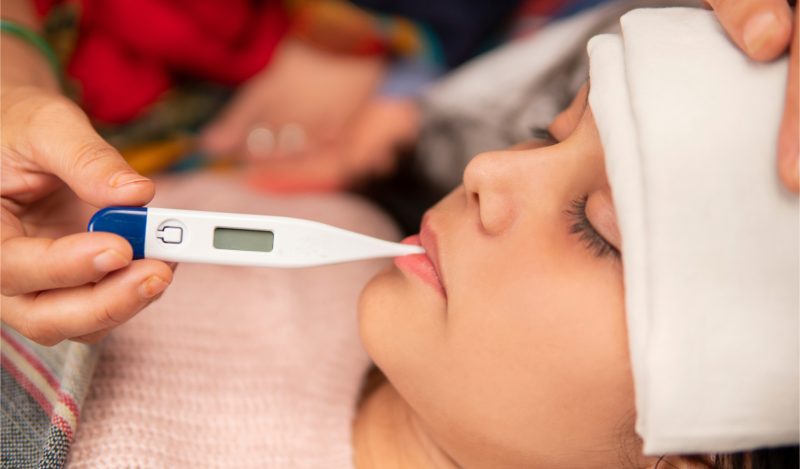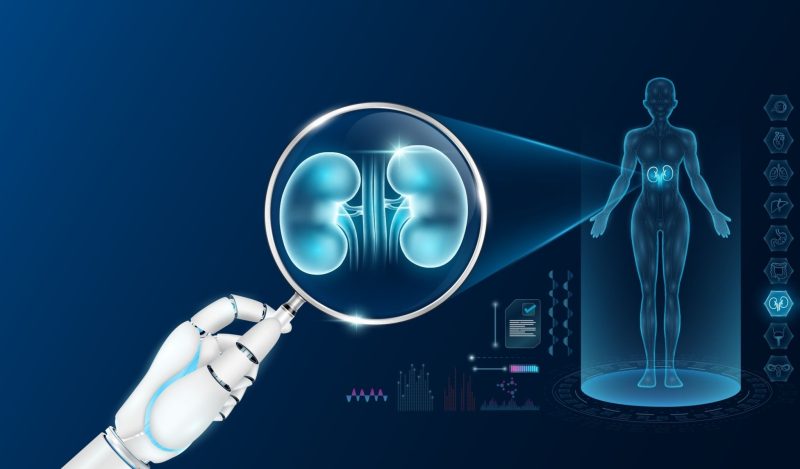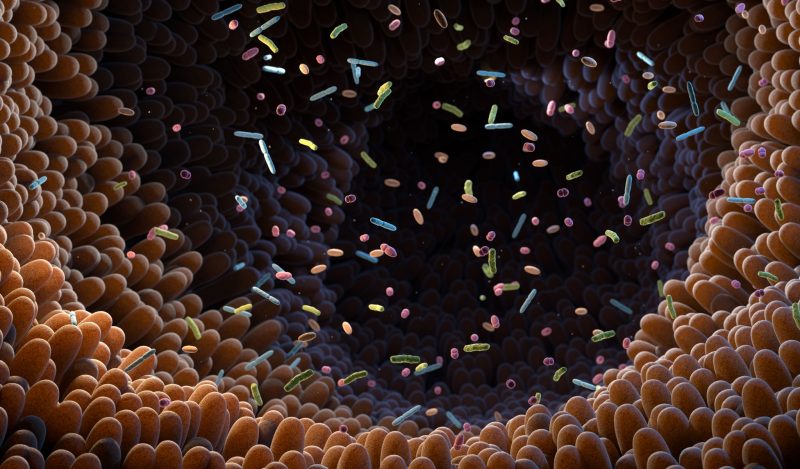In the report of June 24, 2022, the WHO noted a further rise from 450 cases to 920 cases of acute hepatitis in children worldwide from May 26 to June 24, mostly (78%) in children under the age of 6 years. Unfortunately, forty-five children required liver transplants and 18 children died. Most children have been diagnosed in the UK (367), US (305), Japan (58), Mexico (58), Italy (34) and Spain (39).
Out of 100 probable cases with available clinical data the most commonly reported symptoms were nausea or vomiting (54%), jaundice (49%), general weakness (45%) and abdominal pain (45%).
Researchers and medical doctors are still investigating the origin of the mysterious rise in hepatitis with a focus on a possible viral origin. In 45% of the cases in the US a positive PCR test for adenovirus was found, with 75% of the cases in the UK and in more than 50% of the cases in Europe. A positive PCR test for SARS-CoV-2-virus was found in 15% of the cases in Europe and 10% in the US.
Although the PCR test for the adenovirus was run with two probes, Ct values for a positive test were almost all above 30, indicating most of the cases had a low infection risk. Furthermore, histological findings were non-specific and not consistent with known viral causes of hepatitis.
Analysis by Liquid Chromatography/High Resolution Mass Spectrometry detected several therapeutic moieties including antibiotics, ursodeoxycholic acid, vitamins, paracetamol, and fluconazole. Some have been administered in hospital as part of the case management.
Paracetamol, fluconazole and mycotoxins (foodborne toxins) are thought to be highly unlikely. Though, Salmon and Palmer argue that the spread in age of cases is a possibility of food contaminated with mycotoxins. They refer to a Salmonella outbreak in Canada and the US that was recently linked to peanut butter.
Both the CDC and the WHO have ruled out Covid-19 vaccine as a causative agent, as most of the children did not receive the vaccine prior to hepatitis. Based on preliminary reports the WHO still considers the adenovirus as the most possible causative pathogen.
Seeking Illness
Since the start of the pandemic the focus of seeking the cause of illnesses has been a screening on viral infections. Unfortunately, a positive PCR test is not able to distinguish between a piece of dead material (RNA, DNA) or a virus able to cause an infection. How long a piece of RNA or DNA may remain in the body that can result in a positive PCR test is not known. The preliminary reports do not write about an infectious virus that has been cultured.
More observations on children’s health are alarming. Health experts in the US are seeing children in the middle of the summer testing positive for as much as seven common viruses-adenovirus, rhinovirus, respiratory syncytial virus, human metapneumovirus, influenza and parainfluenza as well as coronavirus, with most of them having two or three combined.
Experts say COVID measures have worn down the immune system and made children more vulnerable for infections that normally do not occur in summertime and don’t need hospital visits. The explanation is that children are less exposed to these viruses and therefore not able to deal with the virus appropriately.
Children returning to school after two years of lockdowns have been observed to be too weak to walk, not knowing how to play and communicate, depressed, anxious, angry, and not potty trained at the age of 5.
More children than ever are being prescribed highly addictive drugs like Valium. Mysterious rises in diseases in children are being noticed. Unfortunately, all symptoms might be linked to similar underlying causes that have not yet been investigated while a generation is being over-medicalized and steered towards diagnoses that could result in surgeries and lifelong medication.
Environmental Induced Liver Cirrhosis-Related Malnutrition
During the past two years children have been frequently exposed to microplastics, graphene oxide, titanium dioxide, silver oxide, fluorocarbon (PFAS), methanol, hypercapnia, and hypoxia by wearing face masks, frequent testing and disinfectants adding up to damage the liver, the controller of the immune surveillance system.
In addition, it is acknowledged that the ministry of Health from Spain has been using aerial techniques with toxic antiseptics and chemical disinfectants (Chemtrails) spraying over the population to reach all surfaces quickly as part of the program for the management of Covid.
Before and during the pandemic in many countries children have been exposed to PFAS (per and polyfluoroalkyl substances), a group of 4,700 heterogenous chemicals with amphipathic properties and exceptional stability of chemical and thermal degradation.
A recent peer reviewed study from Keck School of Medicine found that people exposed to synthetic forever chemicals PFAS, PFOS (perfluorooctanoic sulfonic acid) and PFOA (perfluorooctanoic acid) and PFNA (perfluorononanoic acid) are all connected with elevated levels of alanine aminotransferase (ALAT), a biomarker for liver damage.
The children with acute hepatitis all had increased ALAT levels. ALAT is also increased in humans with non-alcoholic fatty liver disease (NAFLD), a condition when excess fat builds up in the liver that can end in liver cirrhosis, suggesting a link with PFAS. According to the authors of this article it is expected that in 2030 about one-third of all adults in the US will be diagnosed with NAFLD. For years it has been known that PFAS is weakening the immune system and may cause cancer. It’s reported to reduce the antibody response to vaccines. The latest research showed that people with high levels of PFAS in their blood had a higher risk for severe COVID-19 due to a poor immune system.
Synthetic ‘forever chemicals’ means they will be permanently in the environment. In recent years much attention has been given to the possible harm of PFAS in drinking water which has lowered the concentrations that are allowed. Unfortunately, there are other ways to be exposed to PFAS which are a great risk for children.
Once people have been exposed to PFAS it remains months to years in the body depending on the specific compound. Up to now there is limited attention for the possible harm of these chemicals in children. Very high levels of PFAS values have been found in the blood of young children living next to a 3M plant in Belgium. As children are more prone to liver damage by exposure to toxic chemicals and PFAS they may accumulate more over time. Experts acknowledged the increased risk for thyroid diseases, elevated cholesterol, liver damage and kidney and testicular cancer.
Countries with the highest number of children with severe hepatitis reported are known to have problems with high levels of PFAS exposure. An expert opinion appeared in the UK in 2021 “Is the UK sleepwalking into a PFAS contaminating nightmare?” In Japan PFAS contaminations had broad attention the past two years, as well as in Italy, Mexico, Spain and the US.
Have the children been poisoned? It is highly likely that children may experience toxic-induced liver cirrhosis-related malnutrition due to the increasing toxic chemicals exposure during the past years to their small bodies that are less capable of detoxifying.
Malnutrition, An Orphan Disease in Healthcare
In 2019 UK Malnutrition Week focused on liver disease and malnutrition. Malnutrition is when a person’s diet does not contain the right amounts of vitamins, minerals, and other nutrients. Many acute and long-term health conditions including liver and gut diseases are associated with malnutrition risk. Poor nutrition is common in patients with liver failure or cirrhosis and can lead to muscle wasting, weakness, and fatigue. Around three million people in the UK were in 2019 either malnourished or at risk of becoming malnourished. Now more than two years into the pandemic, this number may be far higher.
Lockdowns and school closures resulted in most children being less exposed to sunlight. Among other communicable diseases vitamin D deficiency is involved in the pathogenesis of chronic liver diseases by viruses.
A fifth of all Covid-19 deaths of under 5 worldwide were recorded in Brazil, with half of them in one of the poorest regions of the country. Most of the children who died were between the age of 29 days to 1 year. Also, in Brazil bioaccumulation of PFAS in a tropical estuarine food web has been reported.
Each child is exposed to different loads of environmental chemicals and has a personal physiological and metabolic condition. Many might have been unknowingly in a certain stage of malnourishment before the pandemic. The grade of intoxication and malnourishment influences the vitality of the liver, gut permeability, microbiome, and inflammation of the digestive system that influences the nutrition available for a proper liver-gut-brain functioning.
This interplay of chemicals and nutrients may explain the variety of problems among children currently being observed from mental and/or physical problems to infectious disease, psychomotor disorders and organ failure. A possible relation between prenatal PFAS exposure and psychomotor development during the first two years of life has been found in an observational study in Spain.
Exposure of Children to High Levels of Chemicals
Fluoropolymers and nanoparticles are essential parts of green technology like electric vehicles, solar panels, Artificial Intelligence and more. The ban of these chemicals makes a green agenda far more difficult to realize. Although the green agenda’s aim is a less polluted and healthier world, limited attention has been given to possible harms.
Evidence from observational and real-world data on the damaging effect of the exposure of children to high levels of chemicals like PFAS, biocides, heavy metals, methanol and microplastics that have been poorly or never investigated for cytotoxic and genotoxic effects continues to grow. The scattered evidence worldwide needs to become actionable evidence with a measurable impact worldwide to prevent further harm. A realistic harm-benefit analysis is highly needed.
Too Much Harm
Evidence of overdiagnosis and overtreatment continues to grow. Seeking illness is a profitable business, which is amplified by the Covid pandemic. On the other side an increasing population suffers from underdiagnosis.
Many children remain underdiagnosed and untreated. It is time to fight childhood undernutrition and dehydration. Most people associate malnutrition with poverty. Unfortunately, chemical-associated malnutrition and dehydration exponentially grew during the Covid lockdowns to become a widespread and urgent problem all over the world.
Malnutrition is responsible for significant abnormalities of physical and mental development. Undernourished children have diminished cognitive performance and learning difficulties, and a poorly functioning immune system. Better nutrition of a now pathologized generation will have a positive impact on the health of future generations.
Published under a Creative Commons Attribution 4.0 International License
For reprints, please set the canonical link back to the original Brownstone Institute Article and Author.









